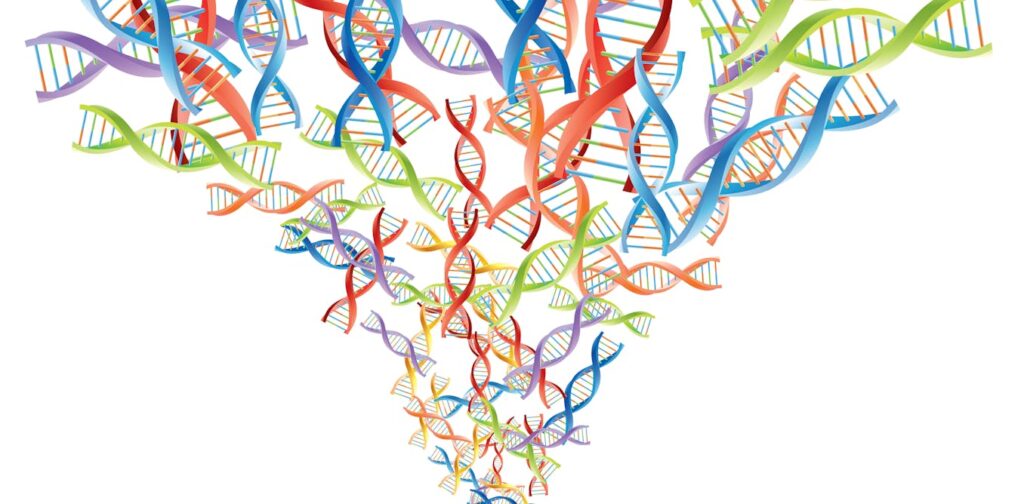
Genetic inheritance has long been perceived as a straightforward equation: one gene equals one trait or disease. However, recent research suggests that this simplistic view may overlook the intricate web of genetic interactions that truly shape our health. This revelation could revolutionize how medicine is personalized and practiced, offering a more nuanced approach to diagnosis and treatment.
Traditionally, the role of genetics in medicine has focused on identifying specific disease-causing genes to guide clinical decisions. Yet, for most health conditions, the genetic landscape is far more complex than the current diagnostic models account for. Each individual’s DNA is a tapestry of millions of genetic variants, both inherited and spontaneously developed, that collectively influence traits ranging from physical attributes like height and eye color to susceptibility to diseases such as diabetes and heart disease.
Rethinking Genetic Influence
In a groundbreaking study published in the journal Cell, researchers have uncovered how a genetic mutation associated with neurodevelopmental and psychiatric disorders, such as autism and schizophrenia, is influenced by a multitude of other genetic variants. The findings advocate for a holistic approach to genetics, where the entire genome is considered, rather than focusing on isolated genes. This shift could enhance our understanding of genetic predispositions and disease development.
Primary and Secondary Variants
Certain rare genetic variants can independently cause conditions like sickle cell anemia and cystic fibrosis. However, the manifestation of symptoms often depends on additional genetic factors across the genome. While a primary variant may initiate a disease, secondary variants can significantly alter its course and severity.
Consider the analogy of a song: the melody represents the primary variant, while the accompanying instruments—the secondary variants—modify the song’s rhythm and feel. This explains why individuals with the same genetic mutation can experience vastly different symptoms, a phenomenon known as variable expressivity. The presence and number of secondary variants can amplify the effects of a primary mutation, often resulting in more severe disease.
“A higher number of secondary variants on top of a primary variant generally leads to more severe disease.”
In some cases, a primary variant coupled with a secondary variant can lead to two distinct disorders in the same individual, such as Prader-Willi syndrome and Pitt-Hopkins syndrome. Conversely, secondary variants might not have noticeable effects alone but can influence disease development in the absence of a primary variant, as seen in childhood heart disease.
Insights from Chromosomal Deletions
The research team focused on a specific genetic alteration known as a 16p12.1 deletion, where a segment of chromosome 16 is missing. This mutation is linked to developmental delays, intellectual disabilities, and psychiatric conditions like schizophrenia. Intriguingly, many children inherit this variant from a parent who shows milder or no symptoms.
By examining 442 individuals from 124 families with this genetic mutation, the researchers discovered that children with the 16p12.1 deletion had more secondary variants than their carrier parents. These secondary variants, ranging from small changes to large deletions and duplications, were associated with diverse health outcomes, including reduced cognitive function and increased psychiatric symptoms.
“While a 16p12.1 deletion makes the genome more sensitive to neurodevelopmental disorders, the specific symptoms depend on other present variants.”
Moreover, the study revealed a pattern of assortative mating, where parents with similar genetic risks tend to partner, potentially compounding genetic risks in their offspring. Over generations, this accumulation of secondary variants could result in children with more severe symptoms than their parents.
Challenges and Opportunities in Genetic Research
The lag in understanding secondary variants can be attributed to biases in genetic research methodologies. Studies often recruit participants from clinical settings, focusing on those with severe disease manifestations. This approach risks overestimating the impact of primary variants while overlooking the subtle roles of secondary variants.
To address this, researchers advocate for broader studies involving diverse populations. For instance, recruiting individuals from general settings, such as shopping malls, could reveal milder symptoms and different secondary variant patterns, offering a more comprehensive view of genetic interactions.
“People with a 16p12.1 deletion from the general population often had milder symptoms compared to those recruited in clinics.”
Embracing Genetic Complexity
The shift from a deterministic view of genetics to a more complex model acknowledges the interplay between genetic variants and environmental factors. This paradigm shift has profound implications for clinical practice. Future diagnostics could involve a comprehensive genetic profile analysis to predict developmental trajectories, psychiatric risks, and treatment responses more accurately.
Families could receive more nuanced counseling, understanding that a genetic variant does not guarantee a specific outcome. This approach moves beyond explaining why diseases occur to predicting who is at risk and tailoring personalized care strategies.
While the science is still evolving, the need for larger, more diverse datasets and sophisticated models is evident. As researchers continue to unravel the complexity of genetics, the potential to fulfill its promise of personalized medicine becomes increasingly attainable.
“By embracing this complexity, genetics can move closer to its ultimate promise: not just explaining why disease happens, but predicting who is most at risk and personalizing care for each individual.”





